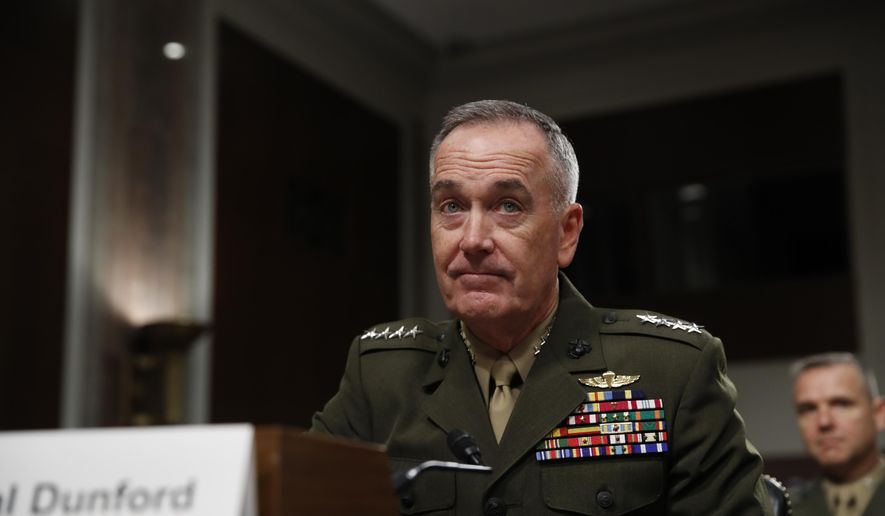For the second time this week, American warplanes downed an armed Syrian aircraft — this time an Iranian-built drone — threatening U.S.-backed forces battling the Islamic State terror group in the war-ravaged country.
Pentagon officials confirmed Tuesday that an Iranian-built Shaheed-129 aerial drone advancing on U.S. and coalition positions in southern Syria was destroyed by U.S. fighters. The drone had “dirty wings,” Pentagon spokesman Capt. Jeff Davis said, using the military colloquialism for an aircraft carrying weapons.
The strike took place near the U.S. and coalition training camp near the Syrian city of At Tanf, which straddles the Iraqi, Syrian and Jordanian borders. It was near the U.S. special operations camp where a foreign drone fired on joint U.S.-Syrian patrol on June 8, which was the first direct attack against coalition forces by the regime in Damascus.
The camp has been under siege by Iranian militias tied to the Syrian regime for the last several weeks, with paramilitaries amassing outside the camp’s extended perimeter. U.S. fighters have carried out two airstrikes in as many months against Iranian-backed forces attempting to breach that perimeter.
Capt. Davis did acknowledge Tuesday that the drone taken out by U.S. forces was Iranian built. “What we do not know is who was operating it,” he added, noting it could have been Syrian military officials flying the drone.
Tuesday’s drone shoot down came days after a Navy F-15 Strike Eagle shot down a Syrian-flagged Su-22 fighter, after the regime jet attacked militiamen tied to the U.S.-backed Syrian Democratic Forces or SDF. The attack prompted a swift and harsh rebuke from Moscow, who is backing forces loyal to Syrian President Bashar Assad.
In response, Moscow cut off a key deconfliction line to their U.S. counterparts in Syria, and vowed to target any U.S. or coalition aircraft flying over Syrian-held territory west of the Euphrates river. The U.S. jet that shot down the Syrian drone near At Tanf was operating west of the Euphrates River.
Capt. Davis declined to comment whether Russian anti-aircraft or fighters operating in the area targeted the U.S. fighter. But he did note each airstrike taken against regime forces by the U.S. were executed in self-defense and was not designed to “send a message” to Mr. Assad’s forces and their minders in Russia.
U.S. commanders also did not contact their Russian counterparts before the Syrian drone shoot-down, despite the Pentagon’s stance the deconfliction line remains active on the American side. It was a matter of timing rather than the current diplomatic impasse between Washington and Moscow that prevented U.S. commanders from reaching out, Capt. Davis said.
“This happened very quickly,” he said. The time window between when the drone was identified to when it was destroyed “was a matter of minutes,” he added.
• Carlo Muñoz can be reached at cmunoz@washingtontimes.com.




Please read our comment policy before commenting.